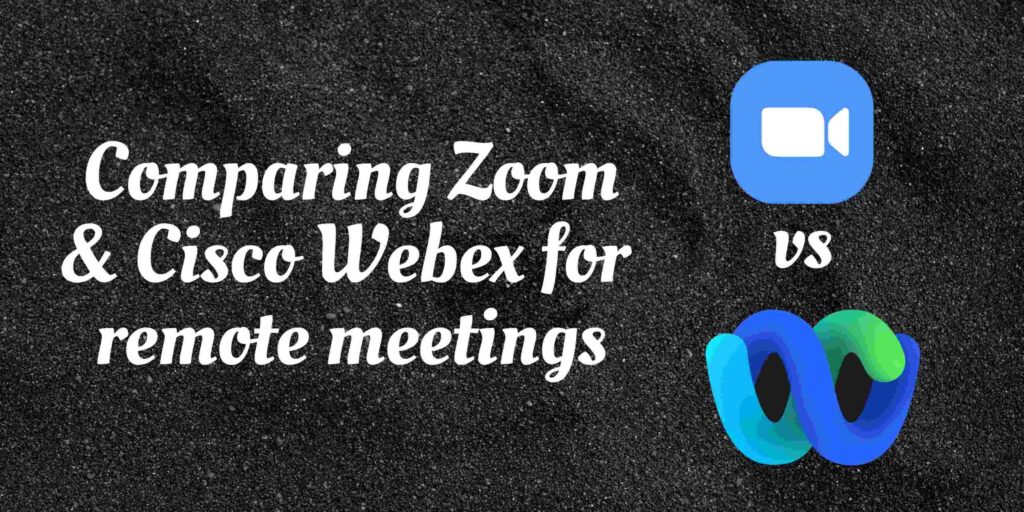
What is a sales playbook?
A Sales playbook is a guide that outlines the strategies and a set of tactics containing best practices, operation objectives, sales goals and conversational techniques for delivering the high quality sales performance.
A sales playbook exhaustively covers all the information needed for effective selling. Akin to an encyclopaedia, a sales playbook is the go-to guide for any and every question that your sales representatives may have regarding the sales process.
Why do you need a Sales Playbook?
1. Consistent messaging through sales playbook
Adopting a sales playbook is a strategy to introduce and sustain standardization in your sales process.
A sales playbook describes a standard set of processes and practices. When the sales representatives adhere to the playbook, the company messaging to the customers and prospects is consistent.
This approach ensures uniformity in customer experience. Additionally, a sales playbook ensures that the entire sales team is on the same page and follows uniform protocol in playbook-defined scenarios.
2. Reduce onboarding and refresher training duration
A sales playbook is a useful tool for fresher and refresher training. Thereby ensuring that there are no inconsistencies between different sets of training.
Since the sales playbook contains all the information related to sales processes, it reduces the time required to develop training material. The sales playbook serves as a quick revision book for any sales training.
3. Improve the efficiency of sales team
A sales playbook can enable the new hires to start selling quickly and effectively.
Sales representatives need not spend their valuable time searching for the best practices or objection handling responses from various unreliable sources. A sales playbook gives them ready reference material to answer such queries. This, in turn, improves the effectiveness of sales calls.
The sales representatives can concentrate on understanding the customer requirements rather than having to search for content.
What goes into your sales playbook?
The 7 key elements that you must include in your sales playbook are:
1. Company Overview
Inclusion of company overview into your sales playbook not only helps new hires understand more about the company but also helps them in answering any questions posed by the customers regarding the company.
In this section, you should ideally include:
- the company history,
- company mission,
- core values,
- sales team structure and,
- goals.
2. Product Details
Include any detail about the product or solution that you are offering in this section of your sales playbook. Include a brief product description, pricing, the unique selling proposition (USP) and differentiators from competitor products.
Rather than scouring for such details at the last minute, including these details in the sales playbook can save the valuable time of the sales representatives and improve the call effectiveness.
3. Buyer Personas
Include all the buyer personas that your marketing team has identified for the solutions that you are offering. In the personas, specifically mention the buyer behaviour patterns w.r.t. decision making, motivators, budget range, geography, education background and any other detail that will be relevant to selling your product.
4. Sales Processes
Identify the stages of your sales cycle and write down your sales process. Map the sales roles and clearly mention the responsibilities of the roles at each stage.
This section of the playbook must give a clear and exhaustive explanation of your sales processes and protocols to your sales representatives.
5. Sales plays (Frequently occurring sales scenarios)
This will be the most referred section of your sales playbook.
Sales plays are ready scripts that your employees can use in scenarios that occur frequently.
The sales plays that you can include in your playbook are:
- lead qualification,
- product demos,
- prospecting,
- identifying triggers & buying signals,
- objection handling scenarios,
- negotiation,
- closing,
- follow-up, etc.
Sales plays must include the scenario, recommended set of steps to be followed explained preferably using an anecdote and average duration of a particular play.
6. Key Performance Indicators
The playbook must clearly mention the sales metrics that will be tracked to measure the sales performance. The sales representatives must have clarity on what results are expected out of them. This approach leads to focussed efforts and sales representatives do not spend time on non-value adding activities.
Read about the 11 Key Metrics To Measure Sales Performance.
7. Resource List
Include references to any sales software/tools, case studies, training material, tips, tricks, templates, etc., in this section. This section can include the reference material that is too huge to be included in the playbook but can be referred to to increase efficiency. A link to a central repository of knowledge can be a great addition to this section.
Sales Playbooks Best Practices
It is challenging to build a sales process that your reps will religiously follow. So how do you build the sales playbook which they will always refer to and learn consistently?
Here are some of the best practices which surely gives success:
1. Involve the entire sales team to create the sales playbook. This creates a sense of ownership and brings together the best practices being followed in silos.
2. Leverage existing documents and material that you have to create the sales playbook.
3. Update the playbook consistently.
4. Evolve the playbook to adapt to newer trends and practices.
5. Write the playbook in lucid and user-friendly language.
6. Make playbooks easily accessible to all the stakeholders.
7. Refer and use the playbook in meetings and other conversations.
8. Track the usage of playbooks and introduce necessary changes if the adoption of the playbook is low.
Also read about the top qualities of high performing SDRs.
Sales Playbook of the Future
The future of sales playbooks that we describe in this section is almost here and is being adopted by stakeholders with high technology appetite.
Sales playbooks are now a source of performance analytics. Sitting on a cloud database, sales playbooks are now available to all the sales representatives at a central location in form of presentations.
The amount of time that a sales representative spends on a particular slide serves as an input to analytics for sales performance and playbook adoption rate.
Sales playbooks are also sneakily available in form of search footers – playing the role of a fundamental incognito coach. Thus,
Sales playbooks of the near future not only measure performance but also enhance it.
Additionally, the new age sales playbooks provide features like simpler switching between multiple documents, avoiding screen sharing nightmares by sharing only from inside the playbook, sharing not only documents but also browser, measuring its own adoption and the result of standardization due to adoption of the playbook.
The sales playbook is a sales representative’s arsenal. Equipped with a sales playbook, a sales representative is more than ready to go and fight their battles for the day.
7 Qualities Of High Performing Sales Representatives
Here are the 7 best qualities that we think a high performing SDR must reflect.1. SDR should be great storytellers
High performing SDRs should be able to weave interesting stories with integrity about how a solution can be useful to a prospective customer. They should be able to communicate a win win proposition. SDRs should be articulate, have convincing powers, and should be able to get their thoughts across the table.
2. Empathetic SDRs = Active Listener = High performing
SDRs must first be empathetic to be high performing. They should be active listeners. SDRs should not only listen to the words of the prospects but also understand what is not said. Understanding the problems of the prospect rather than blatantly pushing products and their features is the hallmark of empathy. Prospects are more likely to respond if they feel heard and understood.
💡 Goodmeetings.ai helps sales reps imbibe empathy throughout the lifecycle of customer interaction. Using the Q&A widget in the platform, sales reps can discover the needs of prospects and fine tune their pitch. Similarly, the AI used in the platform enables sales reps to decipher changing moods and emotions of prospects during a call. These non verbal cues are a great indicator of understanding what's important for customers.
3. A high performing SDR is a hustler
An SDR must be a hustler. Persistence, grit, and firmness are the most required qualities of a high performing SDR. An SDR must continuously push himself to succeed. They should be able to accept failures and bounce back for the next project without letting failures affect them.
4. Well organized SDRs perform well
Successful SDRs are always disciplined, organized and process-oriented. They always follow a structured approach to their work. They adhere to the process defined. They diligently share the relevant documents with the prospective customers, listen attentively in the meetings and keep the lead data organized. They stick to the schedule and keep their calendar up-to-date.
💡 Goodmeetings.ai helps sales reps to organize their demos in a standardized fashion. For example, it allows you to pre-load relevant playbooks, video testimonials, and demo environment at a workspace level, thus offering the obvious advantage of delivering consistent demo experiences. Similarly, the option to capture structured meeting notes (in notes app and via transcripts) or record video meetings easily ensures that no valuable data around customer interaction is missed.
5. Perpetual Learner
An SDR should be eager to learn. They should have no egos while reflecting on their own misses, learning the best practices from their peers, and taking guidance from their sales leaders. There should be a culture of open communication and collaboration within sales teams so that good work is recognized and replicated.
💡 Goodmeetings.ai helps sales reps identify hits and misses in their pitch. Once consistent patterns emerge over a number of calls, it also gives sales reps a picture of the areas in which they excel and the areas in which they should actively seek coaching. This level of transparency ensures that specific training plans are made for sales reps to make their sales superstars. Also, using this platform, the turn around time for ramping sales teams is reduced substantially. This is because new recruits get to binge on video playlists of winning sales demos and have their sales coaches shadow them in early sales calls.
6. Tech Savvy
The pandemic forever altered the process of sales. Face-to-face communication was replaced by remote and virtual communication. This change brought about a lot of changes in the way in which the sales was done. SDRs are supposed to be more tech-savvy than ever before. With the rise in remote sales, SDRs should be able to ace video prospecting. The sales-specific remote meeting tools are advancing by leaps and bounds. SDRs should be able to quickly learn the new technologies and unlearn things that are not relevant anymore.
7. Adaptable
More than anything, the SDRs should now be adaptable. They need to now rely more on AI than their own intuition for nonverbal cues. This is because, most of the time, in remote communication, the SDRs may not be able to see the prospective client. Training was never a structured part of sales. Many of the sales qualities were supposed to be inborn and training was conducted on-demand. In recent times, training is structured and is well-defined over a period of time. SDRs should be able to adapt to this new training regime. Technology and training are not the only two changes that the pandemic brought in the sales world. To survive the future, SDRs must adopt all the changes brought about by the advent of remote sales.





